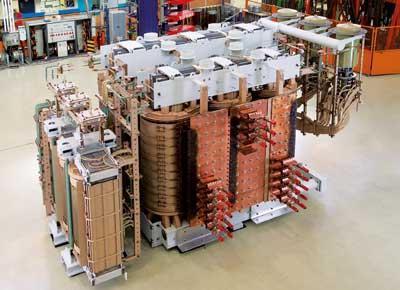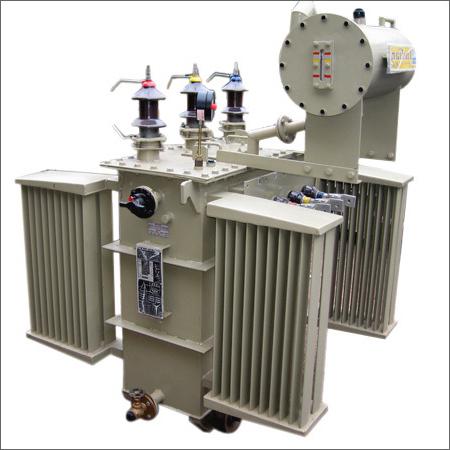The principle of operation of the transformer is based on the famous law of mutual induction. If you include the primary winding of this electric machine into the AC network , then alternating current will flow through this winding. This current will create an alternating magnetic flux in the core. This magnetic flux will begin to penetrate the turns of the secondary winding of the transformer. A variable EMF (electromotive force) will be induced on this winding. If you connect (close) the secondary winding to some receiver of electrical energy (for example, to a conventional incandescent lamp), then under the influence of an inducted electromotive force, an alternating electric current will flow through the secondary winding to the receiver.

Along with this, the load current will flow through the primary winding. This means that the electricity will be transformed and transferred from the secondary winding to the primary at the voltage for which the load is designed (that is, a power receiver connected to the secondary network). The principle of operation of the transformer is based on this simple interaction.
To improve magnetic flux transmission and enhance magnetic coupling, the transformer winding, both primary and secondary, is placed on a special steel magnetic circuit. The windings are isolated both from the magnetic circuit and from each other.

The principle of operation of the transformer is different in voltage of the windings. If the voltage of the secondary and primary windings is the same, then the transformation coefficient will be equal to one, and then the very meaning of the transformer as a voltage converter in the network is lost. Separate step-down and step-up transformers. If the primary voltage is less than the secondary, then such an electrical device will be called a step-up transformer. If the secondary is less - then lowering. However, the same transformer can be used both as a step-up and as a step-down. The step-up transformer is used to transmit energy at various distances, for transit and other things. Step-downs are used mainly for the redistribution of electricity between consumers. The calculation of a power transformer is usually carried out taking into account its subsequent use as a step-down or step-up.
As mentioned above, the principle of operation of the transformer is quite simple. However, there are some interesting details in its design.
In three-winding transformers, three isolated windings are placed on the magnetic circuit. Such a transformer can receive two different voltages and transmit energy to two groups of power receivers at once. In this case, they say that in addition to the lower and higher voltage windings, the three-winding transformer also has a medium voltage winding.
The transformer windings are cylindrical in shape and completely isolated from each other. With such a winding, the cross section of the rod will have a circular shape to reduce non-magnetized gaps. The smaller such gaps, the smaller the mass of copper, and, consequently, the mass and cost of the transformer.